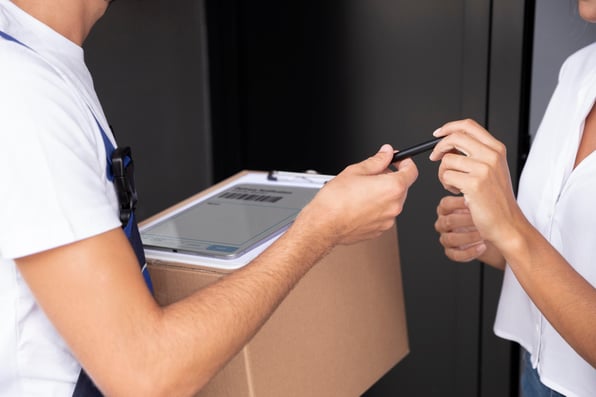
Strengthening the Tenant-Landlord Relationship through Collaborative Work Management
Ciprian Chiripuci

Collaboration and efficiency are key to success and the tenant-landlord relationship is no exception. Traditional approaches to property management have often been cumbersome and time-consuming, leading to misunderstandings and friction between tenants and landlords. However, with the rise of collaborative work management tools and practices, this dynamic is changing for the better. In this article, we will explore how collaborative work management is transforming the tenant-landlord relationship, along with real-world examples, benefits and best practices that foster a harmonious and mutually beneficial partnership.
-
Defining Collaborative Work Management (CWMS)
Collaborative work management involves use of digital platforms and tools that facilitate seamless communication, task delegation and progress tracking. By employing such solutions, tenants and landlords can streamline their interactions, enabling them to work together more effectively and transparently.
-
Real-world Examples
Centralized Communication Hub
One of the fundamental ways collaborative work management improves the tenant-landlord relationship is by providing a centralized communication hub. CWMS platforms allow tenants and landlords to communicate directly, addressing issues and inquiries promptly. This transparency fosters trust and mitigates potential misunderstandings.
Online Maintenance Requests
Gone are the days of lengthy phone calls or handwritten maintenance requests. With collaborative work management, tenants can now submit maintenance requests through user-friendly online portals. Landlords receive these requests instantly and can prioritize and delegate tasks efficiently. For instance, a tenant can report a leaky faucet via the platform and the landlord can swiftly assign the issue to a plumber, reducing the response time significantly. Or the tenant will send the request directly to the designated plumber and the landlord will be just notiffied. Is that efficiency, of what?
Document Management
Collaborative work management tools enable both parties to share and access essential documents securely. Lease agreements, rent receipts and property condition reports are readily accessible, reducing the risk of misplaced paperwork and disputes over contractual terms.
-
Benefits of Collaborative Work Management
Enhanced Communication
Transparent and efficient communication is at the core of any successful relationship. Collaborative work management platforms foster open dialogue between tenants and landlords, leading to quicker resolutions and a stronger partnership.
Time and Cost Savings
Automating processes and digitizing workflows save time for both tenants and landlords. Property managers spend less time managing paperwork, allowing them to focus on providing exceptional service to tenants. Tenants benefit from swift issue resolution, eliminating unnecessary delays in addressing their needs.
Improved Tenant Satisfaction
When tenants' concerns are acknowledged and resolved promptly, their overall satisfaction increases. This leads to higher tenant retention rates, reducing vacancies and associated turnover costs for landlords.
Data-Driven Decision Making
Collaborative work management tools capture data on property performance and tenant feedback. Landlords can use this data to identify trends, make informed decisions and implement improvements based on real insights.
-
Best Practices for Effective Collaborative Work Management
Choose the Right Platform
Select a collaborative work management platform that suits the specific needs of your property management business. User-friendly interfaces and mobile accessibility are vital for maximizing efficiency.
Onboarding and Training
Ensure that all relevant parties, including tenants and property managers, receive proper training on how to use the platform effectively. A well-informed user base leads to better adoption rates and smoother interactions.
Set Clear Expectations
Communicate with tenants about the availability of the platform and the types of requests or inquiries that are suitable for submission through the tool. Clearly define response times and escalation procedures to manage expectations effectively.
Regular Feedback and Improvement
Encourage tenants to provide feedback on their experiences with the collaborative work management system. Use this feedback to identify areas of improvement and implement necessary changes for a more user-friendly experience.
Maintain Data Security
Data security is paramount when dealing with sensitive information related to tenancies. Ensure that the collaborative work management platform adheres to industry standards for data protection.
In conclusion, collaborative work management is revolutionizing the tenant-landlord relationship, fostering transparency and improving communication. By implementing digital solutions, property managers can efficiently address tenants' needs while optimizing their operational processes. The benefits of enhanced communication, time and cost savings, improved tenant satisfaction and data-driven decision-making make collaborative work management a valuable tool for any forward-thinking property management business. Embracing these practices will undoubtedly strengthen the bond between tenants and landlords, resulting in a harmonious and mutually beneficial partnership.
Related posts
Here are some resources to help you get more out of your assets


Ciprian Chiripuci
Truck Sealing in Delivery Logistics: Definition, Benefits and Best Practices

Ciprian Chiripuci
Mastering that Last Mile
READY TO TALK?